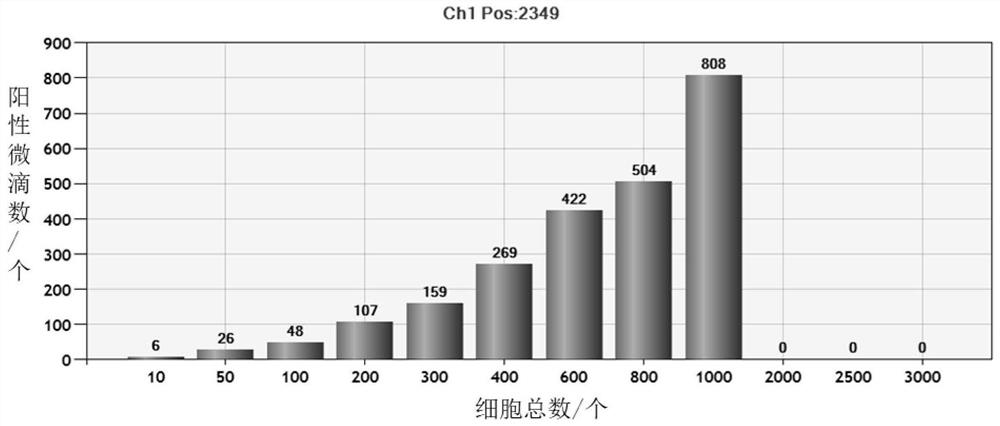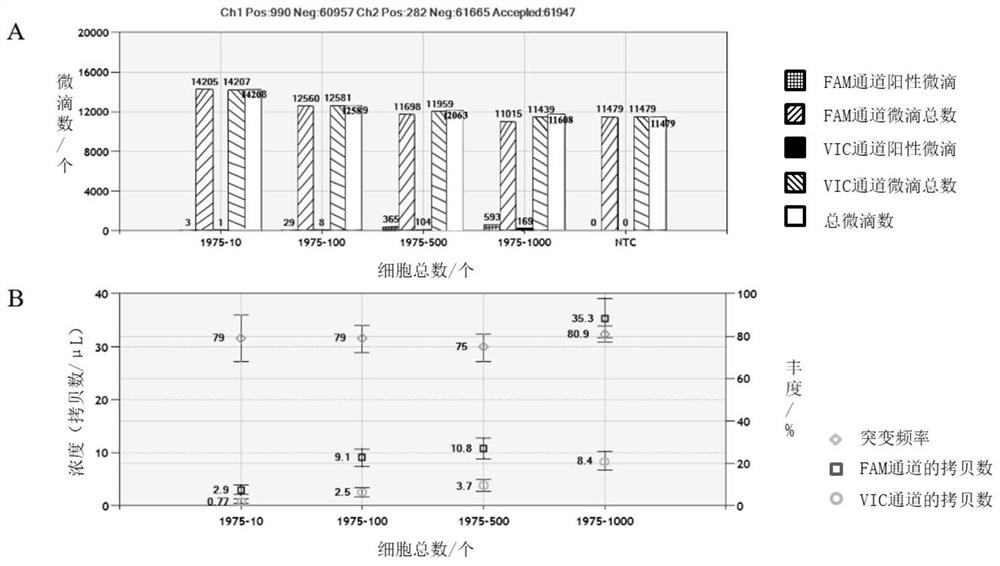Method for single cell detection and analysis and application thereof
A single-cell, cell technology, applied in the field of single-cell detection and analysis, can solve the problems of inability to achieve single-cell detection, small sample volume, and high detection sensitivity
- Summary
- Abstract
- Description
- Claims
- Application Information
AI Technical Summary
Problems solved by technology
Method used
Image
Examples
Embodiment 1
[0048] This example is used to illustrate the effect of the single cell separation method provided by the present invention.
[0049] (1) Single cell isolation and verification of HepG2-GFP cells
[0050] In this example, HepG2 cells labeled with GFP were used for single cell isolation experiment. The construction method is as follows: the shuttle plasmid (PCDH-CMV-MCS-EF1-GFP-PURO, purchased from Youbao Biological Company) and the lentiviral packaging kit (Lenti-vpak packaging kit, purchased from OriGen×e Company, article number TR30037 ) in 293T cells (purchased from Shanghai Cell Bank, Chinese Academy of Sciences) were co-transfected according to the instructions of the kit, at 37°C, 5% CO 2 After 48 hours of culturing under conditions, the virus liquid was collected (concentration was 10 8 / ml). The HepG2 cell suspension (concentration of 4 × 10 5 / ml) in a 6-well plate, the number of cells per well is about 4×10 5 , at 37°C, 5% CO 2 Cultivate overnight under conditi...
Embodiment 2
[0086] This example is used to illustrate the effect of the method provided by the present invention on the separation and detection of single cells at the expression level.
[0087] In this example, MCF-7A5 and MCF-7B10 cell lines were used for experiments. For the construction method, see Zeng Q, LiW, Lu D, et al. CD146, an epithelial-mesenchymal transition inducer, is associated with triple-negative breast cancer. Proc Natl Acad Sci U S A. 2012, 109(4): 1127-1132. These two cell lines were transformed from breast cancer cell MCF-7, which can stably express CD146. Among them, MCF-7A5 is a cell line with high expression of CD146, and MCF-7B10 is a cell line with moderate expression of CD146.
[0088] Prepare a single-cell separation system according to the ingredients and dosage in Table 4.
[0089] The reverse transcriptase used in Table 4 was purchased from Bio-Rad, Cat. No. 1864021. Its concentration is 40U / μL.
[0090] In the primer / probe Mix used in Table 4, the final...
Embodiment 3
[0105] This embodiment is used to illustrate the impact of the concentration of SDS and additives in the system on the accuracy of the method provided by the present invention.
[0106] (1) Effect of SDS concentration in the system on single cell separation and detection results
[0107] The single cell separation experiment was carried out using the method in Example 1 (1), the difference being that the number of cells in the system was fixed at 1000, and the final concentrations of SDS were respectively 0, 0.001 wt%, 0.01 wt%, and 0.15 wt%. and 1.5% by weight. Experiments were carried out according to the single-cell separation system in Table 1. The total volume of the system was 20 μL, and the different concentration gradients of SDS were realized by adjusting the addition of SDS solution and water.
[0108] The number of positive droplets and total droplets in the system containing different concentrations of SDS was analyzed, and the results showed that: as Figure 7 A...
PUM
 Login to View More
Login to View More Abstract
Description
Claims
Application Information
 Login to View More
Login to View More - R&D
- Intellectual Property
- Life Sciences
- Materials
- Tech Scout
- Unparalleled Data Quality
- Higher Quality Content
- 60% Fewer Hallucinations
Browse by: Latest US Patents, China's latest patents, Technical Efficacy Thesaurus, Application Domain, Technology Topic, Popular Technical Reports.
© 2025 PatSnap. All rights reserved.Legal|Privacy policy|Modern Slavery Act Transparency Statement|Sitemap|About US| Contact US: help@patsnap.com



